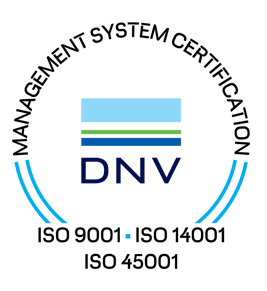Login
Newsroom
Contact




Our vision at GEOLOG is to ensure we meet or exceed all health, safety and environmental (HSE) expectations of our stakeholders and strive to improve our H,S&E performance on a continuous basis. As such, GEOLOG’s HSE requirements are:



GEOLOG HSE Management System is certified under the international standards ISO 14001:2015 (Environmental Management System) and ISO 45001:2018 (Occupational Health and Safety Management System) by DNV-GL for its main locations in Amsterdam and Dubai (headquarters), Aberdeen (GEOLOG UK) and Ijmuiden (operational base for North Sea region). These certifications are integrated by the ISO 9001:2015 (Quality Management System) both for office/base and rig site activities.

Executive Management is fully committed to our HSE vision through constant personal involvement, including review meetings, audits and the provision/assignment of resources. The GEOLOG corporate HSE policy statement is issued directly by the President of the Company, Mr. Antonio Calleri. The HSE function within GEOLOG has grown significantly to maintain pace with the increased expectations of customers and regulatory bodies globally as operations have expanded.
In addition to the powering of our manufacturing plant in Milan by geothermal and solar energy, to our recycling and waste segregation processes implemented in our major offices, as the leading independent provider of Surface Logging, we recognize that our services have an impact on the health, safety and environment in which we operate, for example;
By analysing surface data, we are avoiding the placement of tools and sensors downhole, reducing environmental risk by offering safer alternatives to many downhole solutions. We do not utilise radio-active tools in our services, GeoROX utilises passive source X-Ray Diffraction and Fluorescence technologies to minimise risk to our personnel. Our ability to provide heave compensated monitoring of entire surface drilling fluid circulating systems ensures that inadvertent displacements from the drill-site are minimised, avoiding spills and environmental damage. When combined with DrillClean, borehole stability monitoring, cement jobs are improved, fluid displacements more effective and reservoir damage potentially reduced. We monitor a comprehensive range of gases, providing an additional degree of health, safety and environmental monitoring. We routinely monitor the presence of hydrogen sulphide and carbon dioxide from drilling fluids and have provided analyses of carbon monoxide and other gases where required. KickAlarm provides early warning for fluid influxes and losses. Carefully engineered solutions increase the available reaction time to implement remedial action before an event becomes difficult to control.
Using communication technologies and our Wellcoms remote, real-time monitoring application we are able to reduce the man-power needed at rig-site by providing analysis and interpretation to our clients by office-based experts.
To comply with international standards and clients’ requirements, GEOLOG constantly monitors and evaluates the effectiveness of its HSE system targets. For this reason, many KPIs are evaluated and regularly reported to senior management, such as, the man-hours worked, the number of lost time injuries [1] (LTI), the LTI frequency rate [2] (LTIFR), the total recordable incident rate (TRIR) [3] and all statistics related to minor incidents and environmental spills. In 2016, GEOLOG worked approximately 2 million man-hours worked with zero fatalities, zero lost time injuries, and zero environmental spills.
[1] A Lost Time Injury (LTI) is a work-related injury occurred to an employee in which a physician or licensed health care professional recommends day(s) away from work.
[2] The Lost Time Injury Frequency Rate (LTIFR) is calculated as the number of Lost Time Injuries per million hours worked in the period analyzed.
[3] The Total Recordable Incident Rate (TRIR) is calculated as the number of Fatalities, Lost Time Injuries and Medical Treatment Cases per million hours worked in the period analyzed.